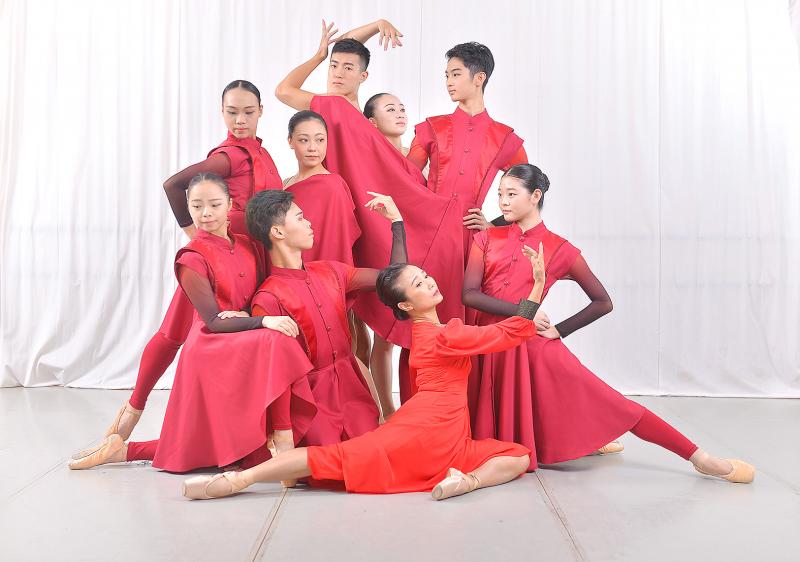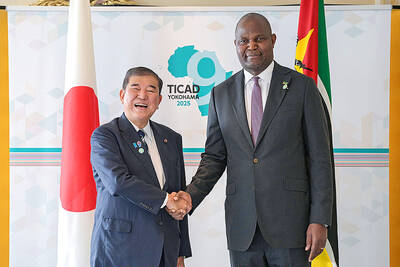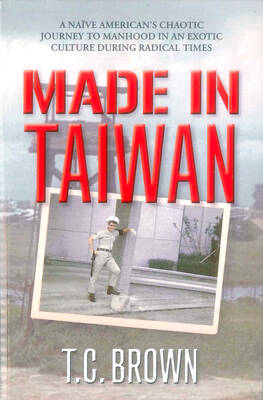Kaohsiung City Ballet’s (KCB, 高雄城市芭蕾舞團) annual August performances are a chance for the company’s more senior dancers to display their talents, and for dance fans to see something besides modern dance.
For the past three years, company founder Chang Hsiu-ru (張秀如) has tapped Romanian choreographer and video artist Constantin Georgescu to either create a new work for the August productions — including 2017’s Light (光) and last year’s Water (水) or help her restage some classics of the Western ballet canon, as she did for 2018’s 19th Century Romanic Ballets (世紀浪漫芭蕾—仙女—吉賽兒—四人舞).
Georgescu was her first choice again for this year’s show, which follows the basic element theme she started in 2017, but for Fire (火), unlike Light or Water, he was tasked not with creating a short piece for a double bill, but a full-length work.

Photo courtesy of the Kaohsiung City Balle
The multi-talented artist said he was inspired by Chang’s choice of theme.
“Fire is an element of transformation, it is energy, power, and creation. It is often used as a symbol for passion, holiness and purification, but also for conflict, aggression and war,” he said.
While fire has fueled major technological developments, it has also been a force for aggression and destruction — against nature or other humans, which made him think about fire as a phenomena caused by human behavior, as well as its symbolism.
Georgescu said Fire is divided into three sections.
In the first, fire is represented by a warrior — someone who is a hero, but also leaves behind him a trail of destruction.
In the second, fire is a sleeping woman whose hopes burn as bright as a candle, he said.
The woman is waiting for the right time, place and person to help her — until she realizes that she is that person herself, and the right time is now, he said, adding that the inspiration for the characters came from a very familiar source, the fairy tale and well-known ballet, Sleeping Beauty.
In the third part, fire as a destructive and constructive force is explored through group dynamics.
Georgescu said he choose a score made up of several string and piano pieces, because he wanted to capture different states and textures similar to those of the different constructs of fire.
His staging, while minimal, is sure to delight audiences, given his track record with the company’s productions of Coppelia (2014) and The Nutcracker in 2015, as well as his own works.
Fire premieres on Saturday at the Pingtung Performing Arts Center, followed by a show in Kaohsiung on Friday night next week, and then one in Taichung the following Tuesday.
It is a pity that the company is not traveling as far as Taipei for this tour, both for the dancers, including veterans Ally Yeh (葉麗娟), Maurice Ssu-tu Ping-hsuan (司徒秉宸), Hsu Chia-jung (許佳蓉) and Eavy Wang Yu-wei (王語薇), and audiences in the capital.

Aug. 25 to Aug. 31 Although Mr. Lin (林) had been married to his Japanese wife for a decade, their union was never legally recognized — and even their daughter was officially deemed illegitimate. During the first half of Japanese rule in Taiwan, only marriages between Japanese men and Taiwanese women were valid, unless the Taiwanese husband formally joined a Japanese household. In 1920, Lin took his frustrations directly to the Ministry of Home Affairs: “Since Japan took possession of Taiwan, we have obeyed the government’s directives and committed ourselves to breaking old Qing-era customs. Yet ... our marriages remain unrecognized,

During the Metal Ages, prior to the arrival of the Dutch and Chinese, a great shift took place in indigenous material culture. Glass and agate beads, introduced after 400BC, completely replaced Taiwanese nephrite (jade) as the ornamental materials of choice, anthropologist Liu Jiun-Yu (劉俊昱) of the University of Washington wrote in a 2023 article. He added of the island’s modern indigenous peoples: “They are the descendants of prehistoric Formosans but have no nephrite-using cultures.” Moderns squint at that dynamic era of trade and cultural change through the mutually supporting lenses of later settler-colonialism and imperial power, which treated the indigenous as

An attempt to promote friendship between Japan and countries in Africa has transformed into a xenophobic row about migration after inaccurate media reports suggested the scheme would lead to a “flood of immigrants.” The controversy erupted after the Japan International Cooperation Agency, or JICA, said this month it had designated four Japanese cities as “Africa hometowns” for partner countries in Africa: Mozambique, Nigeria, Ghana and Tanzania. The program, announced at the end of an international conference on African development in Yokohama, will involve personnel exchanges and events to foster closer ties between the four regional Japanese cities — Imabari, Kisarazu, Sanjo and

By 1971, heroin and opium use among US troops fighting in Vietnam had reached epidemic proportions, with 42 percent of American servicemen saying they’d tried opioids at least once and around 20 percent claiming some level of addiction, according to the US Department of Defense. Though heroin use by US troops has been little discussed in the context of Taiwan, these and other drugs — produced in part by rogue Chinese Nationalist Party (KMT) armies then in Thailand and Myanmar — also spread to US military bases on the island, where soldiers were often stoned or high. American military policeman